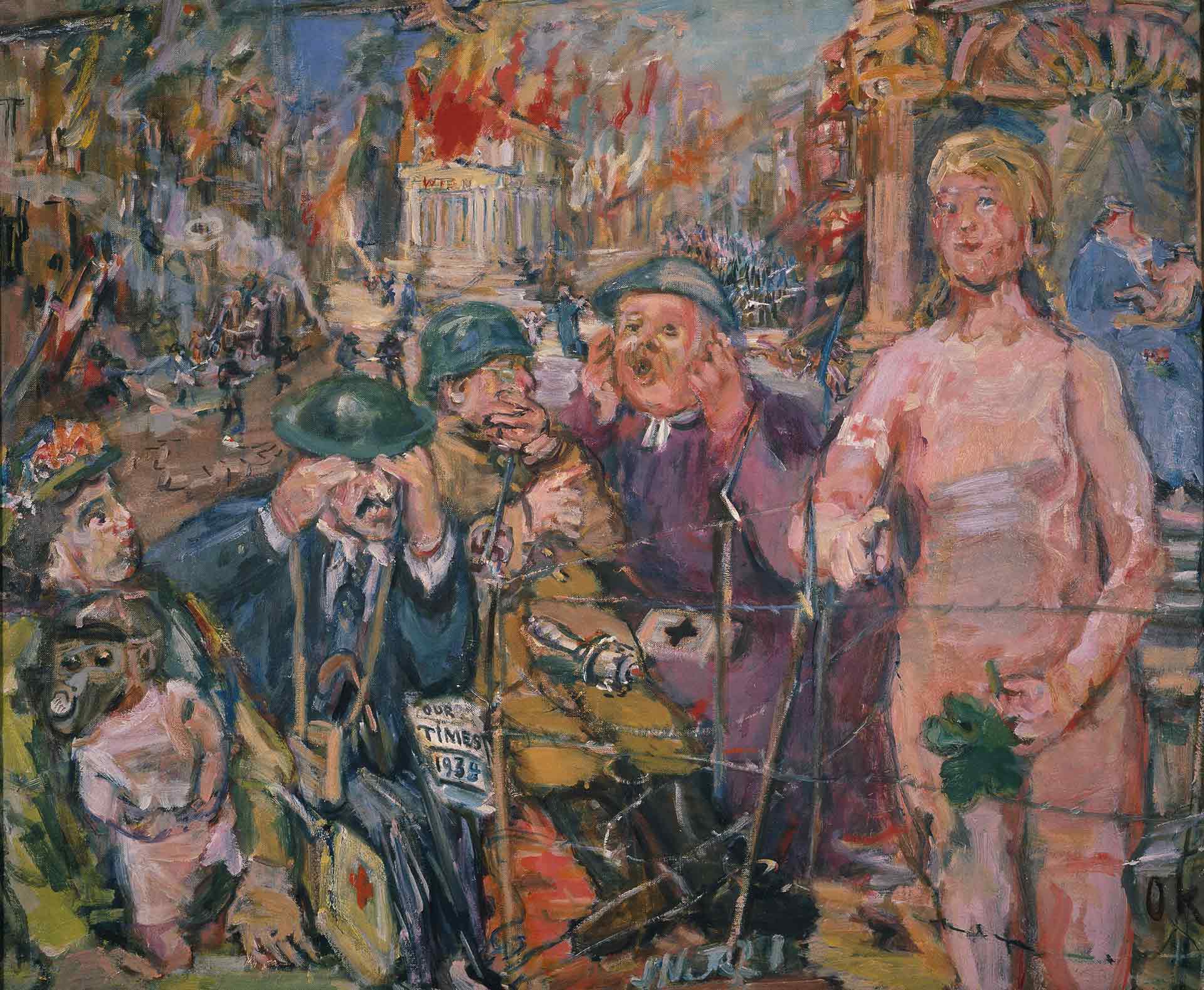Section V - Exile in England (1938–1946)
While in exile in England, Kokoschka did not remain inactive. He was compelled to rebuild everything in a country where his art was not yet acknowledged. With Olda Palkovskà, he lived in relative destitution between London and Polperro, Cornwall, where the painter began, with The Crab (1939–40), a series of allegorical works on a Europe plunged into war. These paintings, small in size due to supply difficulties, are a unique testimony on this dramatic epoch. The artistic means used by Kokoschka were derived from manifold registers: mythological, satirical, even popular. Kokoschka did not merely comment on the situation. With the creation of posters and the publication of articles, he also asserted his pacifism and the necessity of reconciliation. In 1947, he became a British citizen and could travel again throughout Europe. Although he travelled at once to visit his family in Vienna, he nevertheless refused to settle there. In the same year, a large retrospective of his work was organized at the Kunsthalle in Basel, which established him as a major artist and a key protagonist of European cultural reconstruction.


